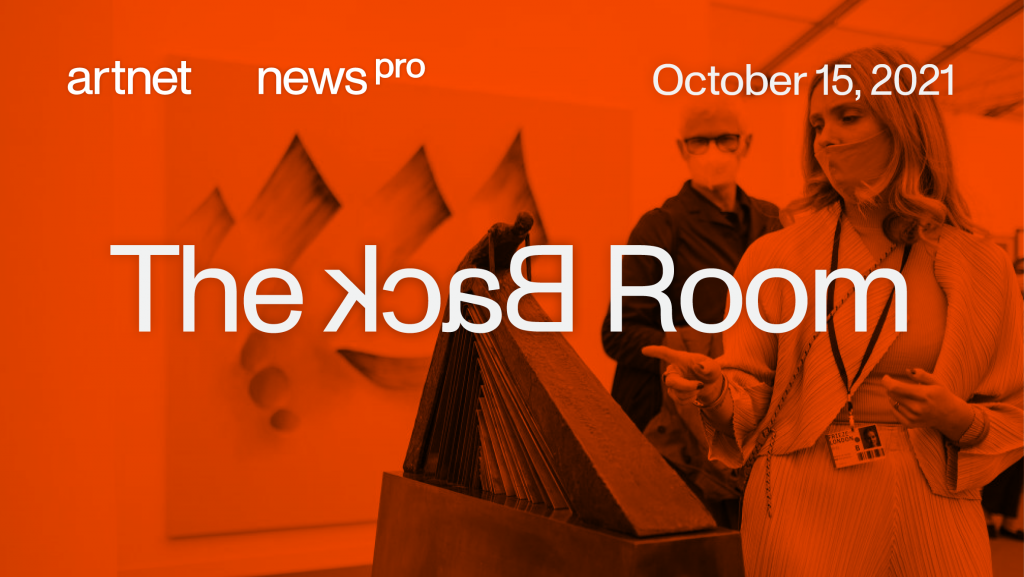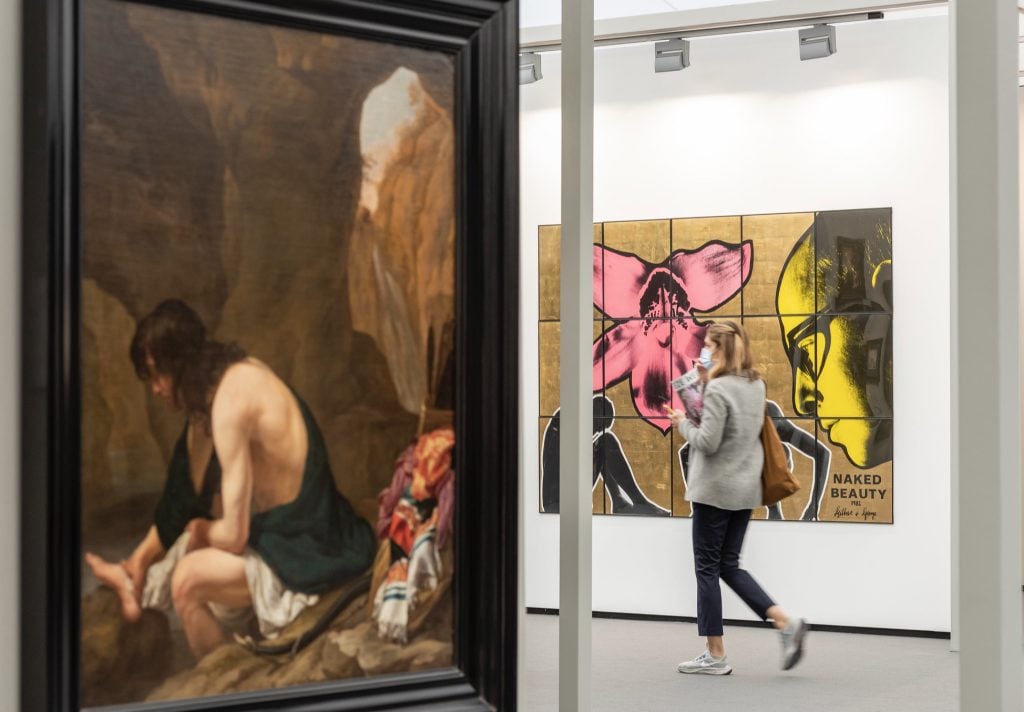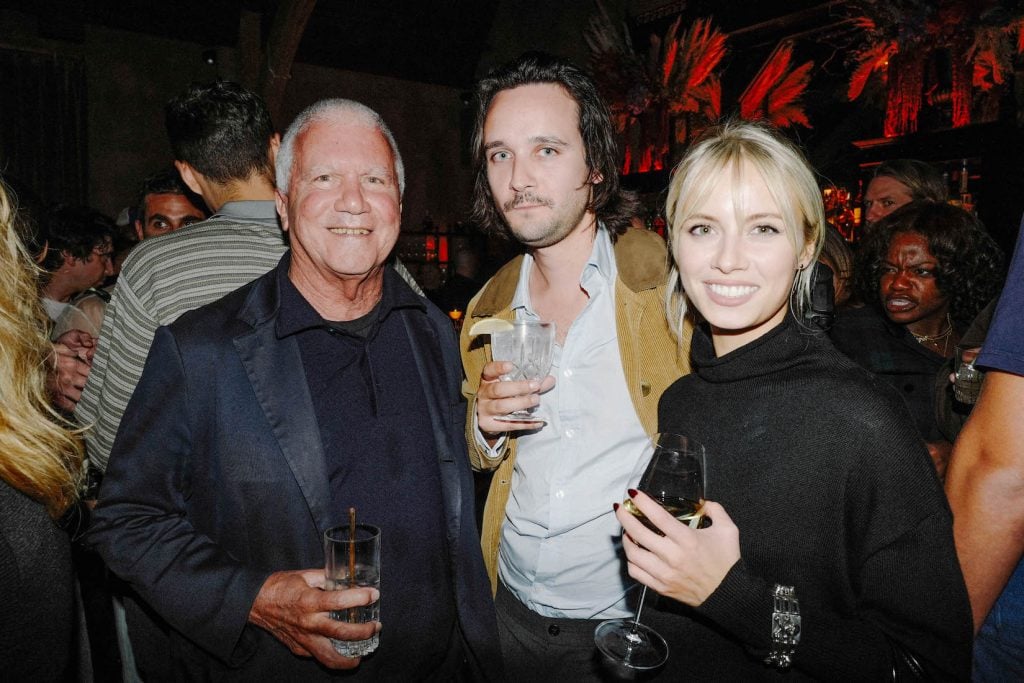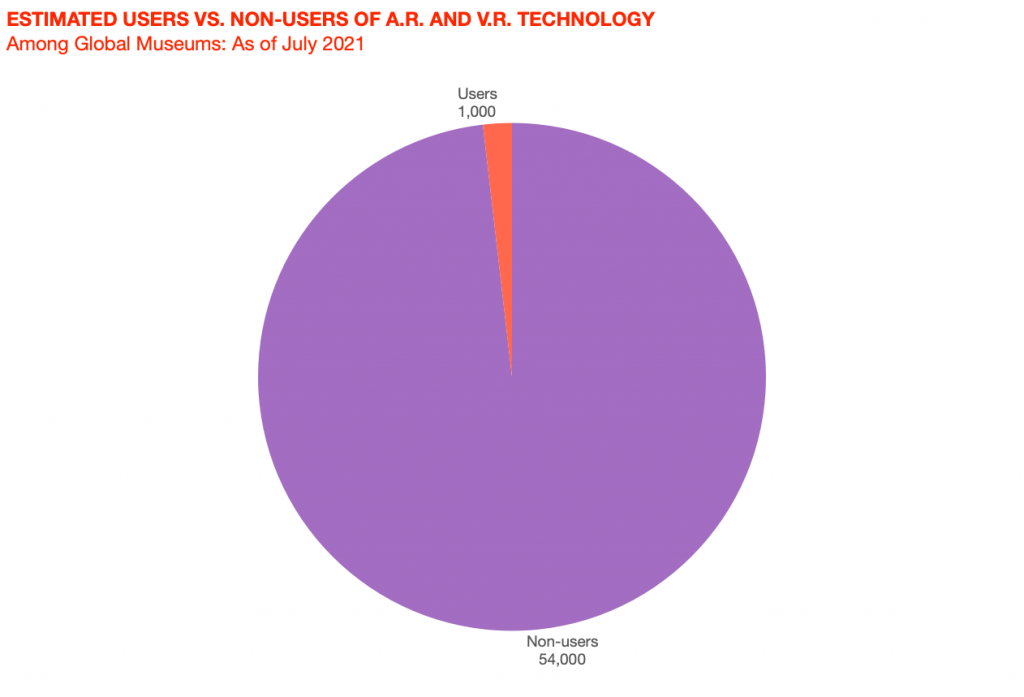The Back Room
The Back Room: Compare and Contrast
This week: a big-picture Frieze breakdown, advisors and dealers form major new alliances, a glaring museum-tech divide, and much more.

This week: a big-picture Frieze breakdown, advisors and dealers form major new alliances, a glaring museum-tech divide, and much more.

Tim Schneider

Every Friday, Artnet News Pro members get exclusive access to the Back Room, our lively recap funneling only the week’s must-know intel into a nimble read you’ll actually enjoy.
This week in the Back Room: a big-picture Frieze breakdown, advisors and dealers form major new alliances, a glaring museum-tech divide, and much more—all in a 7-minute read (2,045 words).
__________________________________________________________________________________

Johnny Van Haeften and Thaddaeus Ropac’s booths at Frieze Masters. Photo: Deniz Guzel. Courtesy of Frieze.
The consensus opinion from London is clear: Frieze Week is back! But as Britain’s premier art-commerce event re-emerges into post-Brexit, post-vaccine London, “back(!)” means something it never quite meant before—and likely will never quite mean again.
To properly evaluate the first live Frieze London and Frieze Masters in two years, two questions are equally important, and both invite a trio of answers.
1. While the sales still flowed, it took a bit longer than usual to undam them at Frieze and (maybe) Frieze Masters.
My colleague Naomi Rea heard two popular explanations for why big-ticket Frieze deals only began appearing around mid-afternoon of Wednesday’s VIP opening…
There was less agreement about whether the sales pace at Frieze Masters lagged behind the historical norm, according to my colleague Vivienne Chow. Transactions there usually move slower than at the contemporary-centric Frieze because of both the featured works (which range from antiquities to the 20th century) and the usual buyers (who tend to do more homework and face less competition). But it’s clear that 2021 did not supercharge Frieze Masters dealmaking.
2. True to the stiff-upper-lip mentality, Brexit has been felt but rarely discussed.
The U.K.’s split from the E.U. was “the talk of [Frieze]” in 2019, Naomi writes, but Brexit was eclipsed this week by chatter about “new normal”-era business adaptations and signs of the market’s bounce back.
However, while multiple dealers agreed that Brexit has added real shipping and customs headaches (worsened lately by a national fuel crunch), many top sellers (including Thaddaeus Ropac) said that the change has proven to be less bad for business than initially feared. One beneficial trade-off: the new regulatory regime means buyers based abroad no longer have to pay 20 percent VAT on art acquisitions.
3. Larger global concerns had a new prominence in the official program.
Two additions in particular added a larger perspective to this year’s Frieze…
1. Top reported sales at Frieze so far have been consistently lower-value.
In my Back Room recap of Art Basel three weeks ago, I was able to relay three sales ranging from $4.95 million to $6.5 million at the main fair (the price king was a Philip Guston canvas placed by Hauser and Wirth), as well as a $4.5 million Robert Rauschenberg (sold by Ropac) and a $3 million Dan Flavin (sold by David Zwirner) at Art Basel Unlimited.
As of Thursday afternoon in New York, the juiciest deals reported at Frieze have been about one-third to one-half those values on average—despite being closed by most of the same galleries, led by…
This is all the more interesting because…
2. Frieze’s VIP cohort included many more U.S. collectors, and a few more Asia-based ones.
Uncle Sam’s contingent included the likes of Jimmy Iovine, Rosa and Carlos de la Cruz, and Michael Bloomberg—and the Americans were spending too, according to exhibitors.
But while Bangladesh-based Rajeeb and Nadia Samdani, India-based Tarini Jindal, and a handful of other major regional collectors showed up, “Asian buyers were again largely absent” due to public-health concerns and travel restrictions per Naomi and Vivienne. Still, several bought remotely from Frieze via FaceTime sessions or advisors who earned their paychecks by entering the scrum.
3. Attendees were much more carefree about health regulations.
Naomi put it memorably: “Safety procedures required a wristband proving vaccination, but it wasn’t welded to your wrist like it was in Switzerland at Art Basel. Masks definitely felt optional” too—despite being mandatory in the fair’s regulations.
__________________________________________________________________________________
We should be cautious about reading too much into the peak-sales comparison between the 2021 editions of Frieze and Art Basel. Price apexes at Basel’s Swiss flagship usually reach higher than any other fair (including its own Hong Kong and Miami Beach events). This year’s version also began multiple days earlier in the week than Frieze, and the loftier prices at Basel could have resulted from significantly more preselling sparked by greater uncertainty among exhibitors.
What we can say for sure is that Frieze, its exhibitors, and buyers have all answered the unique challenges they faced in London in mid-October 2021 with force and flair. Which is an even more positive sign for the market since these exact challenges should be one-time-only (let’s hope).
__________________________________________________________________________________

Larry Gagosian, George Newall, and Anna Weyant at Chapel Bar on the night in question. Photo: Rommel Demano/BFA.com © BFA
In the latest Wet Paint, everything you wanted to know (or really, truly didn’t) about the May-December romance between 76-year-old Larry Gagosian and 26-year-old rising-star artist Anna Weyant, as well as confirmation of a split between Art Market Monitor honcho Marion Maneker and ARTnews/Art in America parent company Penske Media.
Here’s what else made a mark around the industry since last Friday morning…
Art Fairs
Auction Houses
Galleries
Institutions
NFTs and More
__________________________________________________________________________________

© Artnet Worldwide Corporation 2021.
Over the summer, a group of tech-savvy figures in the art business convinced me that five technologies are poised to transform the art world by 2030. One of those five is augmented reality (A.R.), the integration of digital imagery with the physical world via a smartphone screen or wearable device.
Believers in A.R. aren’t just bullish because of the enthusiastic reception the technology has received from early-adopting museums and their visitors. It’s also because A.R. still has a tremendous amount of room to grow among institutions:
Of the roughly 55,000 museums worldwide, fewer than 1,000 (less than 2 percent) have leveraged either augmented or virtual reality (V.R.) to date.
That estimate comes from Brendan Ciecko, the founder of Cuseum, one of the sector leaders in helping institutions step up their technological game (including by launching A.R. and V.R. projects). If the believers are right, Ciecko will have a lot more business coming his way in the next nine years.
__________________________________________________________________________________
“This is not just another Zoom project: the founding galleries have put real money and resources into it. I have felt—and this is my personal view, not on behalf of the IGA— some frustration at how easily the lofty ideals of a year ago have fallen by the wayside as things get busier again.”
—Stevenson gallery director Joost Bosland on the International Galleries Alliance (IGA), a “non-hierarchical” cooperative of 163 global dealers (and counting) that aims to share information and resources in pursuit of greater stability and data-integrity in the gallery sector. (The Art Newspaper)
__________________________________________________________________________________

Jean-Michel Basquiat, Untitled (Red Warrior) (1982). Photo courtesy of Sotheby’s
__________________________________________________________________________________
Estimate: HK$150 million–HK$200 million ($19.3 million–$25.7 million)
Sale Price: HK$162.9 million ($20.9 million) at Sotheby’s Hong Kong
Although the industry’s attention has been consumed by Frieze Week and London auctions, we’re still less than a week removed from a slate of major auctions in Hong Kong. Leading the hammer brigade was Sotheby’s, which racked up $185 million across five modern and contemporary art sales last weekend–and increased its year-to-date total for these categories in Asia to $600 million, a 35 percent improvement on the 2020 equivalent. (That’s no mean feat: remember, the Chinese auction market held steady throughout the shutdown to basically match its 2019 totals.)
The second priciest lot from Sotheby’s weekend sales bonanza was Basquiat’s Untitled (Red Warrior). It is the third work by the artist to sell for more than $20 million in a Hong Kong auction this year, behind a $37.3 million triptych at a Jay Chou x Sotheby’s sale in June, and the $41.7 million Warrior (1982), which became the most expensive Western work ever traded at auction in Asia when the hammer fell at Christie’s in March. Quite a glow-up for an artist “not many Asian collectors knew” in the early 2000s, according to Jakarta-based Museum MACAN founder Haryonto Adikoesoemo (whose family thought he was “crazy” to buy Basquiat’s allegedly “‘ugly’ artworks”).
But Untitled (Red Warrior)’s success also turns out to be a great reminder of a vital auction adage: Not every lot bought at an Asia-based sale is bought by an Asia-based collector. This week, Wet Paint exclusively revealed that the winner of the work is none other than… New York-based gallerist Christophe Van de Weghe.
“Everyone thought it would be an Asian person that bought this piece, but no, it was me!” Van de Weghe said. In fact, he was stunned he could acquire the piece at “such a small price, but there was no Asian competition!” So while the deep hunger for recent Western art in Asia is real, Red Warrior also proves once again that the globalization of the market spins both ways.
__________________________________________________________________________________